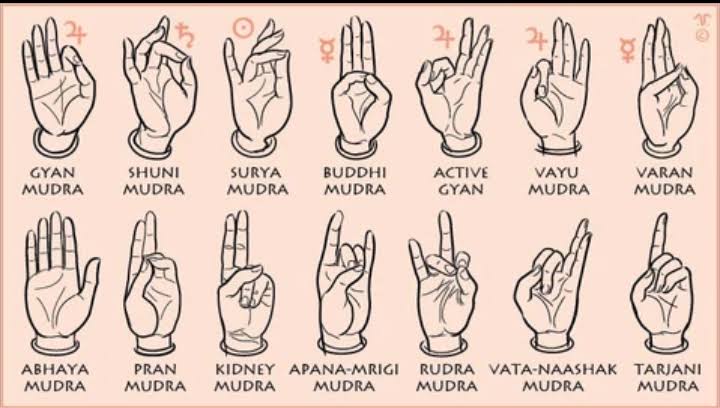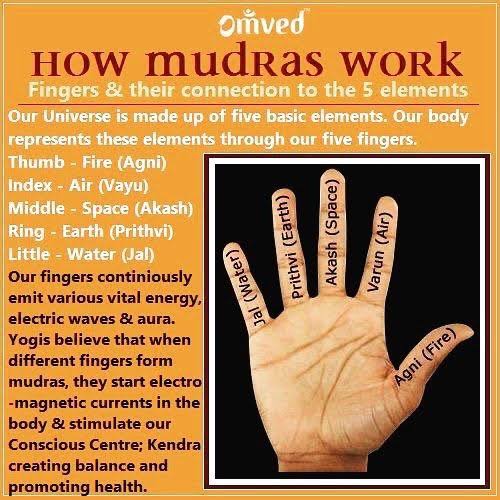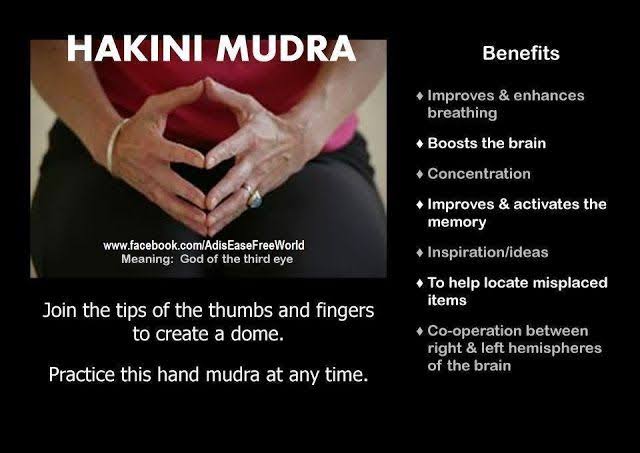MUDRAS AND THE SCIENCE BEHIND IT.
Mudras – meaning ‘seal’, mark’ or ‘gesture’ in Sanskrit – are said to intensify the effects of our yoga or meditation practice and enhance the flow of energy. They are also used in Indian classical dance.
Mudras – meaning ‘seal’, mark’ or ‘gesture’ in Sanskrit – are said to intensify the effects of our yoga or meditation practice and enhance the flow of energy. They are also used in Indian classical dance.
Any living body is made of 5 distinct elements :
Fire, Wind, Ether/Space, Earth, and Water.
According to Ayurveda, disease is the result of an imbalance in our body caused by a deficiency or an excess of one of these 5 elements.
Fire, Wind, Ether/Space, Earth, and Water.
According to Ayurveda, disease is the result of an imbalance in our body caused by a deficiency or an excess of one of these 5 elements.
The 5 fingers represent : Thumb:fire, Forefinger:wind, Middle finger: space, Ring finger:earth, & Little finger: water.
The fingers essentially act as electrical circuits & the use of mudras adjust the flow of energy which balance these various elements & accommodate healing.
The fingers essentially act as electrical circuits & the use of mudras adjust the flow of energy which balance these various elements & accommodate healing.
The finger tips of every living being have many concentrated nerve root endings which are free energy discharge points. Science also confirms that around every tip there is a concentration of free electrons.
By touching together of the tips of the fingers or the finger tips to other parts of the palms this free energy (Prana) is redirected back into the body along specified channels, back up to the brain.
Because Mudras work on Nerves, they are "Neural Science."
Because Mudras work on Nerves, they are "Neural Science."
To immediately experiment and feel it, try this :
Put your hands on your lap in hakini mudra as shown. Close your eyes, sense the size, location & movement of your normal resting breath.
Put your hands on your lap in hakini mudra as shown. Close your eyes, sense the size, location & movement of your normal resting breath.
After a half dozen, then separate your thumbs, keeping all of the other digits in contact with their opposite digit. Sense and observe any change in size, location or movement of sensation related with breathing for 6 breaths.
Then reconnect thumbs and repeat with separating the index fingers for six breaths, then middle finger, etc. Finish after the small fingers by re-sensing with all the fingers in contact. Then try playing with one breath at various levels noting any changes you experience.

 Read on Twitter
Read on Twitter






